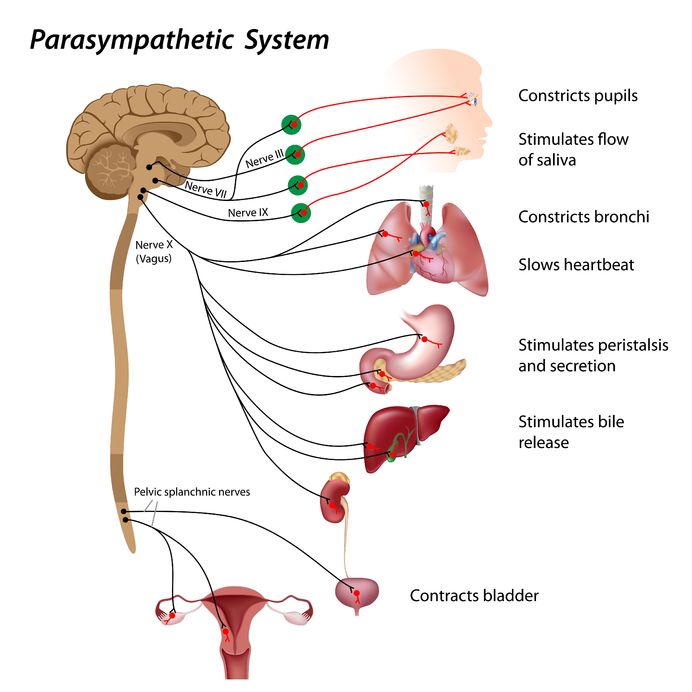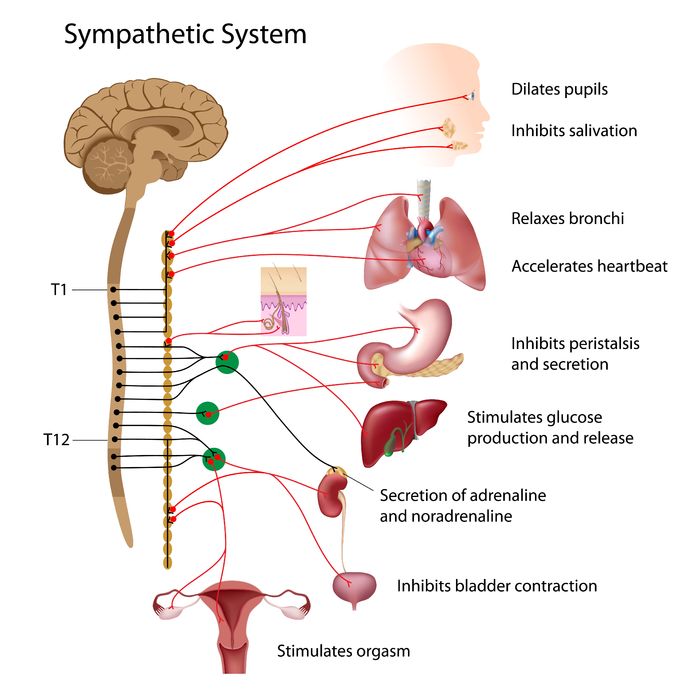



The sympathetic nervous system moderates the body’s response to stress or physical activity by increasing heart rate, blood pressure, increases strength or tone in skeletal muscles, increases sweat secretion, pupil dilation, and other functions. In short, it helps the body gear up for physical exertion or to flee. It is often referred to as fight/flight or freeze mode. The parasympathetic nervous system does much of the opposite work. It decreases heart rate, blood pressure, and skeletal muscle tone, preparing the body for rest, repair, sleep or digestion. This is the rest/digest mode.
Stimulation of one of these branches occurs without our conscious awareness through our senses and activities like sleeping, eating, exercising or through our mental processes such as having stressful thoughts or peaceful thoughts or any thought and it’s an interpretation by our brain. We are wired for safety and this system is always trying to figure if we are safe or not.
Meditation can help to sooth the mind and the thoughts especially those that stimulate a sympathetic response. Raising awareness on how our thoughts affect our nervous system we can notice if we are having negative or stressful thoughts and use meditation to help focus our mind and slow the stimuli to the fight/flight/freeze mode.
Stimulation also occurs during each cycle of breath. Inhalation emphasizes sympathetic activity (the stress/exercise branch), and exhalation stimulates the parasympathetic activity (the relaxation, rest, and digestion branch). By adjusting the ratio of inhalation to exhalation, we can adjust the relative emphasis given to sympathetic or parasympathetic activity in each breath cycle. The technique of 2-to-1 breathing facilitates a deepening of relaxation by extending the period of parasympathetic activity within each breath. To put it more simply, 2-to-1 breathing decreases nerve activity in the sympathetic nervous system, which arouses the body for physical activity and exertion, and increases the influence of the more quieting parasympathetic nervous system, which regulates the rest and relaxation response.
Pranayama or breath work is the main part of yoga practice and it can directly have an effect on the nervous system. Learning different techniques and finding, which works best for you so you can add them to your toolbox to use in a time of need. Breathwork can help to calm you down and is very effective for helping to fall asleep and fall back to sleep when you wake.
[/cs_text][/cs_column][/cs_row][/cs_section][/cs_content]



